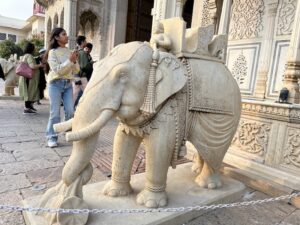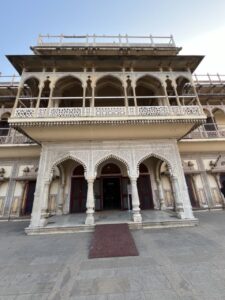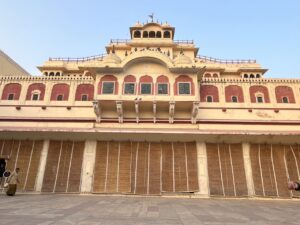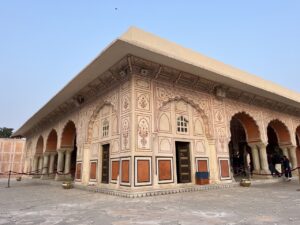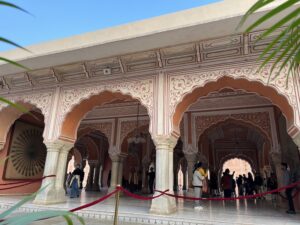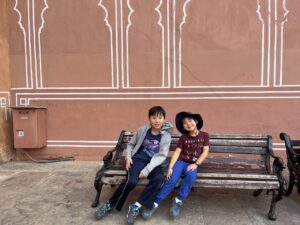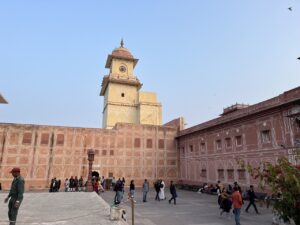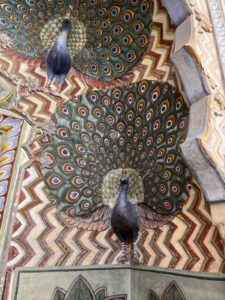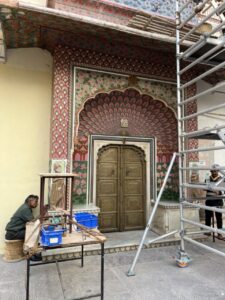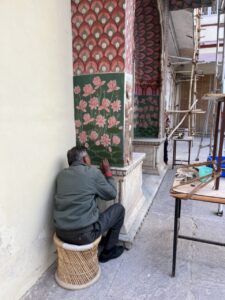The City Palace is a functioning palace complex containing courtyards, gardens, temples and halls that was conceived of and started by Maharaja Sawai Jai Singh, the founder of Jaipur, in 1727. Maharaja Jai Singh constructed most of the outer wall and buildings in the complex, with subsequent rulers adding to and improving it over the subsequent 200 years. The City Palace was and continues to be the residence of the royal family of Jaipur as well as a center of art, learning and worship.
After walking through the entry portal, one of the first buildings that we encountered in the first courtyard was the Mubarak Mahal which was built by Maharaja Madho Singh II in the late 19th century. It once served as the palace of reception for visiting dignitaries and has been converted into a museum containing various textiles and clothing from this area over the past few hundred years. There was a collection of robes belonging to Maharaja Madho Singh that look enormous with reams of fabric that were meant to be elaborately wrapped and pleated around his body. The style required lots of fabric, but Maharaja Madho Singh was also an unusually large man. He was said to be 2 meters tall and weigh 215 kg.
The Chandra Mahal, also known as the Moon Palace, houses the residence of the royal family.
The Diwan-i-Khas (Hall of Private Audience) is a pink-and-white marble gallery where maharajas would consult ministers and advisors on state affairs. Here, we were invited to take photos of the palace guards who were dressed in red turbans, blue overcoats and white pants. All of them sported well-groomed moustaches, modest in comparison to the really fancy ones that twist and twirl, that we have seen since arriving in Rajasthan. Moustaches are a source of pride for Rajasthani men. In the true Rajput legacy, moustaches represent virility, military prowess and masculinity. Apparently, it takes quite some effort to maintain a styled moustache. It must be washed, dried, shaped, conditioned with mustard oil and regularly combed. I observed some men continually twisting their moustache to reinforce its shape. I imagine that special care must also be taken with eating and drinking to keep the moustache clean.
In the palace’s inner courtyard, we saw the four gates that represent the seasons. The Peacock Gate symbolizes autumn and the Lotus Gate symbolizes summer. The Green Gate represents spring while the Rose Gate symbolizes winter.
We watched an artist doing some restoration work on the palace.
Author
-

Song is the mother of four children. She and her family have stepped away from it all and in September 2023, began traveling the world while homeschooling. Song is an ABC (American born Chinese) and has an undergraduate degree from Cornell and an MBA from Harvard. She is an entrepreneur and an educator. Her hobbies include learning, traveling, reading, cooking and baking, and being with children.



